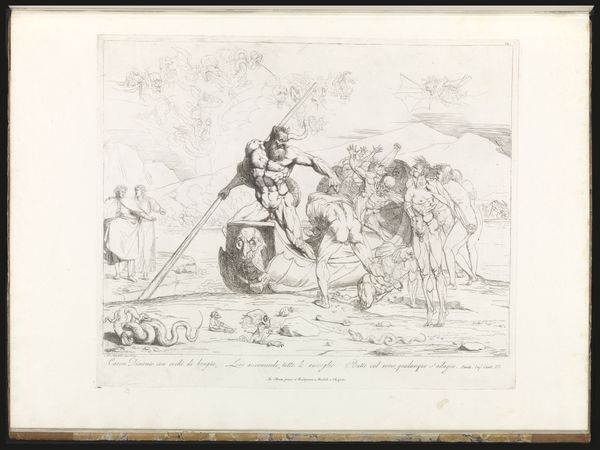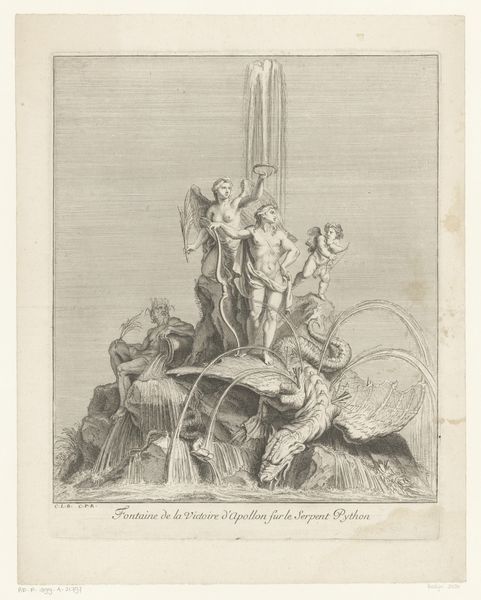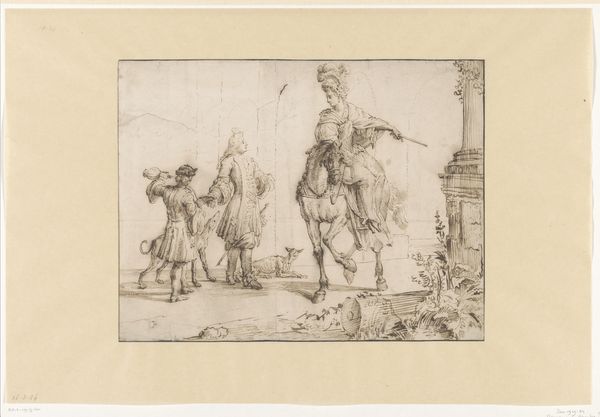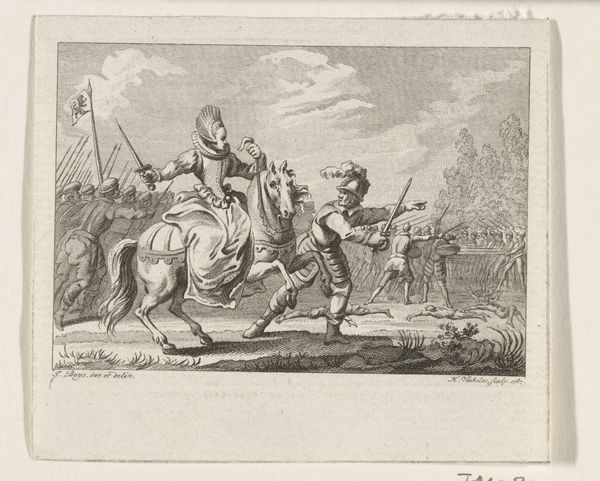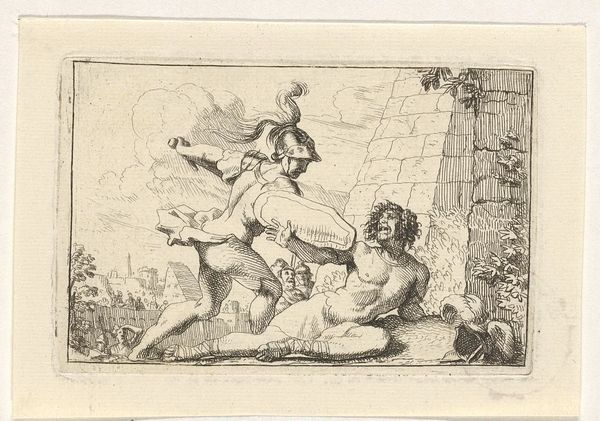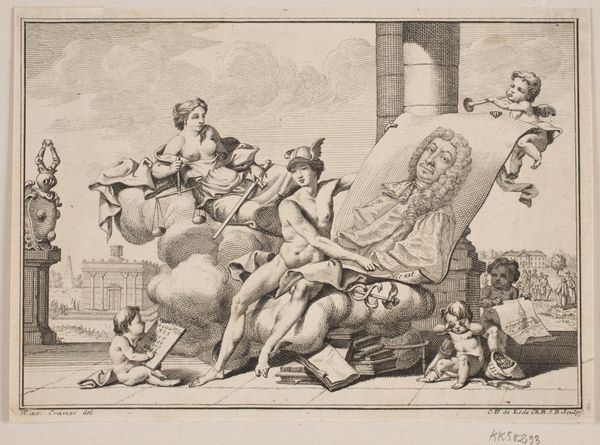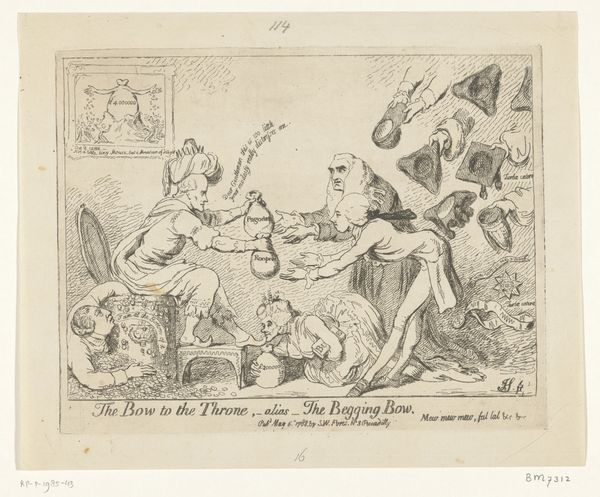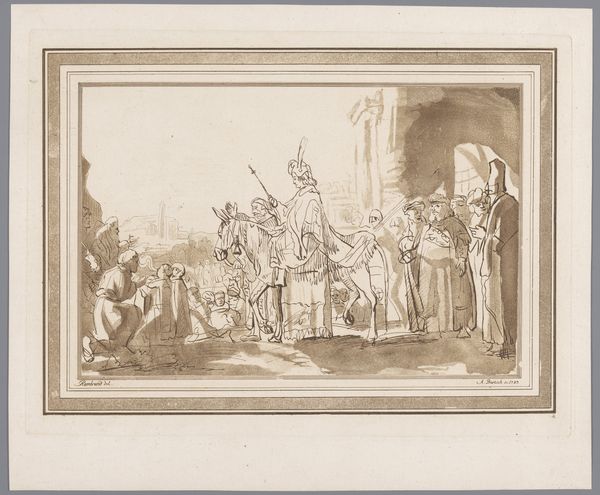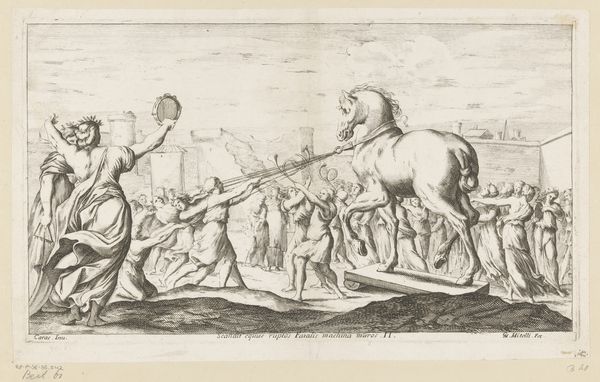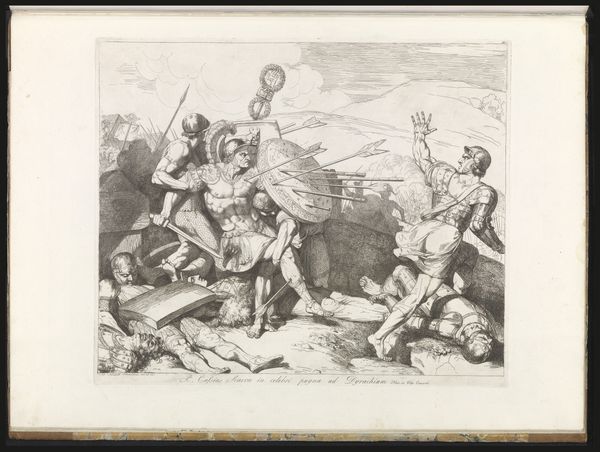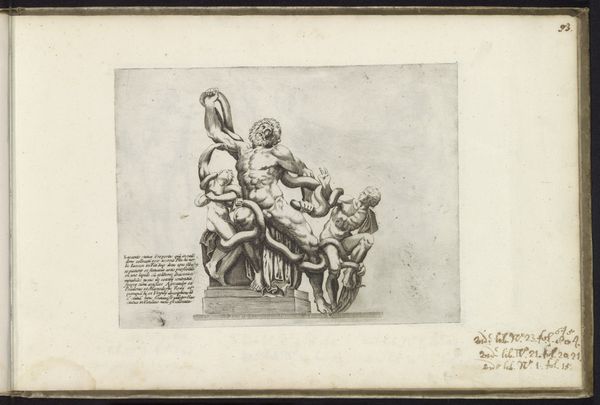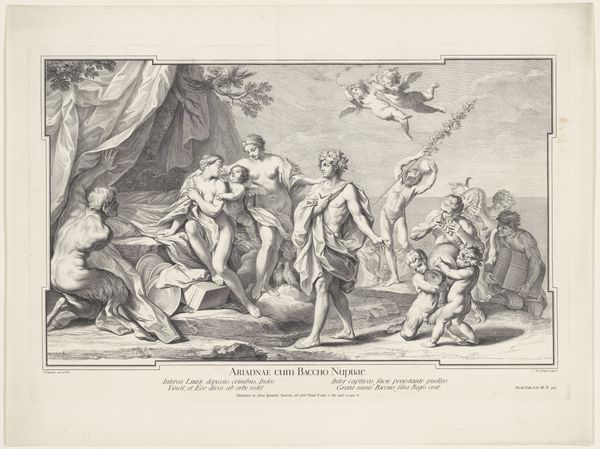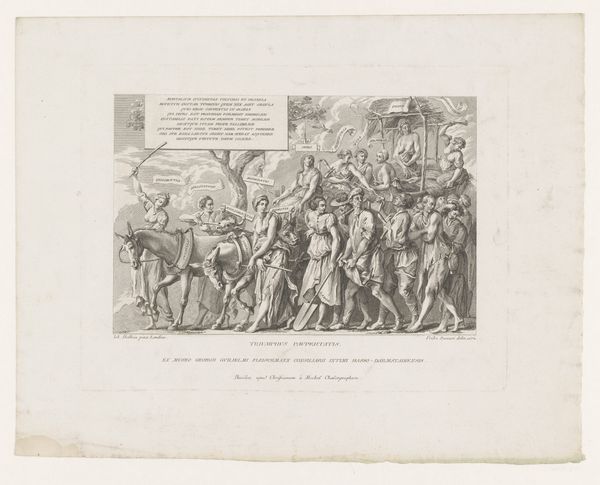
drawing, paper, pencil
#
pencil drawn
#
drawing
#
neoclacissism
#
narrative-art
#
pencil sketch
#
figuration
#
paper
#
pencil
#
history-painting
#
watercolor
Dimensions: height 410 mm, width 490 mm
Copyright: Rijks Museum: Open Domain
Curator: We're looking at Giovanni Battista Romero’s "Aeneas en Creüsa," created around 1804 using pencil on paper. It captures a dramatic moment from Virgil's Aeneid. Editor: It's stark. Almost feels like a freeze-frame from a play, this incredibly clean draftsmanship but also so cool, in both senses, given the chaos depicted in the background. Curator: The neoclassical style certainly lends itself to that feeling. Romero is tapping into the ideals of heroism and duty, very much in vogue at the time amidst sociopolitical changes, though also exploring male anxiety through Aeneas's figure. Think of the performance of masculinity amidst trauma and displacement here. Editor: And trauma inflicted, of course. Creusa, his wife, is barely being rescued. I see her reaching out. Are we supposed to admire this stoicism, the heroic ideal even as his wife is clearly lost, or should we feel anger that his ambitions overshadow everything, even the family left behind? Curator: Absolutely. Look at the careful rendering of Aeneas’s muscular physique versus the obscured face and the less defined forms of Creusa and their child. Power, control and active agency are explicitly male and embodied, whilst the feminine and youthful are rendered passive or spectral. The history of representation echoes those lived power dynamics. Editor: I find that choice very telling, how it echoes larger cultural attitudes about whose stories matter. And it makes me think about the women artists who were simultaneously pushing back against those restrictions, finding ways to subvert these patriarchal narratives. What role did displays of Neoclassicism play within the cultural power structures of its time? Curator: Precisely. Neoclassicism offered a vocabulary for legitimizing power, casting contemporary figures into these idealised classical molds. Romero engages and possibly critiques this as we witness Aeneas’ back turned against his loved one. Editor: Seeing it that way makes me consider what other, marginalized voices would say about this supposedly defining moment in the establishment of Rome. What does it cost? What did those not granted visibility in this narrative forfeit? Curator: This sketch definitely offers fodder for dissecting narratives and questioning historical silences. Editor: A frozen snapshot of so many tangled complexities... I’m left wanting to know more about those voices on the margins of Aeneas' escape from Troy.
Comments
No comments
Be the first to comment and join the conversation on the ultimate creative platform.
